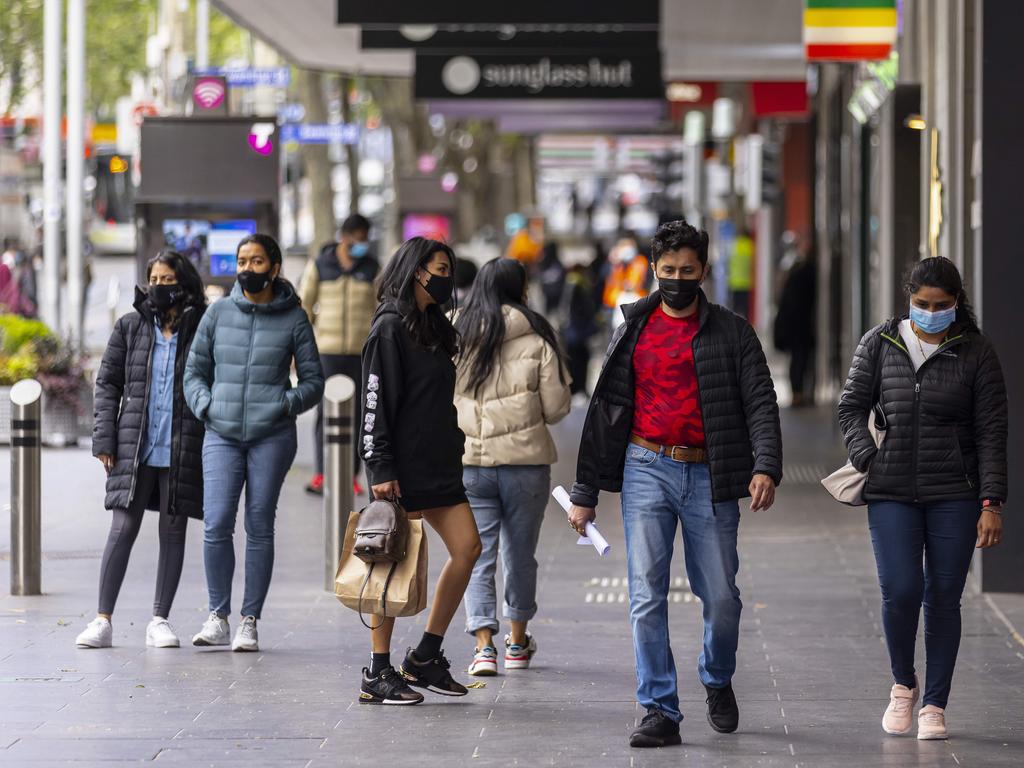Once-in-35-year flu season upon us as Covid collides with influenza
Australia just surpassed a grim milestone nobody saw coming 12 months ago. Now GPs say the worst is yet to come as Covid-19 and the flu collide.
Australia just surpassed a grim milestone that nobody saw coming 12 months ago. But now GPs are saying the worst is yet to come as Covid-19 and this winter’s brutal flu strain collide.
On Sunday, Australia surpassed 10,000 Covid-19 deaths. More than three-quarters of those have occurred since January this year.
So significant are the rising case numbers, hospitalisations and deaths that NSW Health Minister Brad Hazzard on Tuesday called people “crazy” for not yet receiving their third dose of a Covid-19 vaccine.
“If you have had two [doses], or one, and you don’t have number three, to put it bluntly, you’re crazy,” Mr Hazzard said.
NSW chief health officer Kerry Chant said hospitalisations could get up to the numbers seen in January as the new variants of the Omicron strain, BA.4 and BA.5, near an expected peak later this month.
“I’m concerned about this picture,” she said, adding that the simultaneous spread of influenza was also a worry.
Australia has largely dropped all the restrictions from 2020 and 2021 – years that were dominated by a push to get the population vaccinated.
Though different across the various states, mask rules have gone from all settings except those with vulnerable populations such as schools, aged care facilities, hospitals and on public transport.
While leaders of the states and territories have adopted a “living with Covid-19” approach, experts are adamant that the pandemic is not over. And the data backs that up.
While Australia grapples with Covid-19, GPs say the flu season is looking like the worst in a generation.
Dr Bruce Willett from the Royal Australian College of General Practitioners (RACGP) said he had never seen a winter like this one.
“I’ve been a GP for 35 years now and I haven’t really seen a winter like this, where we’re seeing such extraordinarily high numbers of influenza,” Dr Willett told ABC News.
He said that record numbers of influenza infections and a raft of other viruses have created a “perfect storm” that is wreaking havoc on the health system and forcing patients to wait longer than they have in years to see a GP.

An article written by Bond University Professor of Medicine Paul Glasziou and Bond University Professor of Evidence-Based Practice David Henry spells out exactly how worried Australians should be about Covid-19 and the flu.
“This year we’ve seen both the Omicron wave and the re-emergence of influenza,” they wrote in an article for The Conversation.
“After almost disappearing for two years of the pandemic, the lifting of most restrictions (such as social distancing and working from home), the decline in mask use and opening of international borders has allowed influenza to re-emerge.”
Importantly, they wrote that the case fatality rate for Covid-19 – which is the proportion of those infected with the virus who do no survive – “has improved dramatically” from 3 per cent in 2020 to somewhere around 0.1 per cent this year.
A big part of that is the number of people who are vaccinated, but Omicron is also a milder variant than its predecessors.
Not “just a coldâ€: How does omicron compare to delta & influenza? Many confounders (detection, age, vaccination) so table is *rough* (thread->sources). Bottom-line: for unvaccinated omicron better than delta (~1/3 hospital/death) worse than ’flu. For vaccinated, less than ‘flu. pic.twitter.com/eHvzNpCbiR
— Paul Glasziou (@PaulGlasziou) January 2, 2022
The authors say the current death rate is “comparable to the seasonal influenza case fatality rate seen in normal flu years”.
But they note that the pandemic “is not over” and new subvariants will continue “to cause illness, hospitalisation and death”.
Their advice? Boosters, masks and avoiding crowds.
“During winter, we must redouble our efforts to maintain population immunity through vaccine boosters combined with reasonable protective measures,” they wrote.
“Make sure your Covid and influenza vaccines are up-to-date, avoid crowded places (or wear a mask if you can’t), and avoid others if you have any respiratory symptoms.”
It comes after an analysis of daily new confirmed cases of coronavirus last week showed that Australia’s seven-day rolling average is 1100 cases per million people.
That is higher than the US, UK, France and Italy, as well as dozens of other Western nations.
The European average is just 398 cases per million people.





